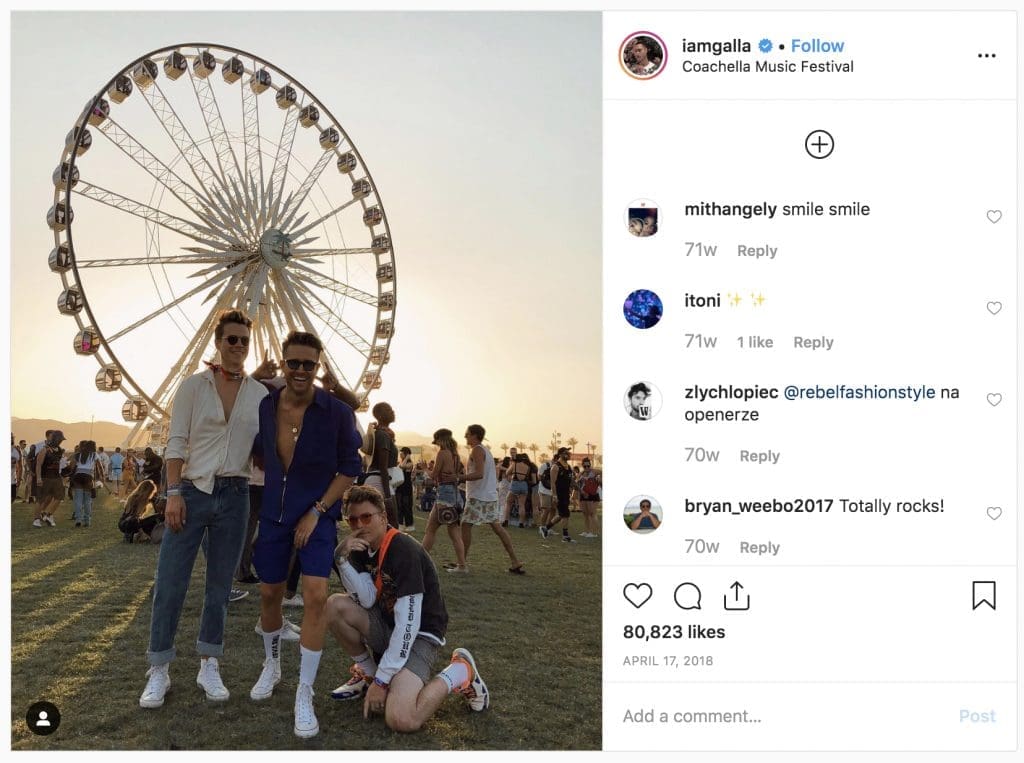Last updated July 2020
Lifestyle influencers have become a powerful force in the marketing landscape, generating a large online following with whom they share aesthetically-pleasing content from their enviable day-to-day lives. Whilst lifestyle influencers might be considered the widest category of influencer, their versatitlity means they are open to working with a range of brands and products. Even within the broad definition of lifestyle influencer you can identify sub-categories, such parent influencers whose lifestyle posts will be very different to fitness influencers who above all promote a health-conscious sporty lifestyle. So whether you’re looking to leverage a particular niche, or appeal to wider range of customers, you’re likely to find a lifestyle influencer that fits the bill.
But who are these lifestyle influencers, and why do brands love them so much?
Lifestyle influencers are content creators who started out with a personal social media account just like any one of us, and grew their audience into a larger, more prevalent, and loyal community. A lifestyle influencer’s social media feed can look a lot like an average person’s content: Photos of food, mirror selfies, or videos of their puppy (Aww!) It wasn’t random that brands decided to go from a glamorous movie star to a more down-to-earth, relatable, “girl-next-door” image – Lifestyle influencers’ relatability is precisely why brands choose them to promote products.
Unsurprisingly lifestyle influencers are the perfect match for brands whose products or services are marketed as essenitial to achieving a certain lifestyle. These brands are aiming for more than just a one-off purchase, but to become integral to people’s way of life. Buying products has always been a way for consumers to demonstrate their values, and this rings true whether their buying organic pet food, protein bars or a new camera. Working with influencers conveys how the brand is part of an aspirational lifestyle.
Lifestyle influencers can be anyone, from anywhere – a single mom in New York City, a college student in Japan, a teenager sharing fashion tips from France, a vegan who travels all around the world, etc. Because of how diverse these influencers are, they all have an individual “edge” that could help brands to connect with.
Why should brands work with lifestyle influencers?
Consumers have been shown to trust influencers’ opinions on brands and products just like they would a friend – and if your friend says “This product will make your life so much better!”, wouldn’t you be curious? Instead of telling consumers “You need our product because of all these functionalities”, you can have an influencer say it, and say it better: “I love this product because…” You guessed it right – influencers also give your brand and product a human voice, a real-life testimony, a story, a discussion. This helps influencers to connect with customers on a more emotional level than brands, due to the way influencers share their candid honest opinions in a way that builds trust with their audience. By showing aspects of their real daily lives, they are more relatable to the public than brands as they use their personal story to create content.
How do I find the right lifestyle influencer to work with?
It’s important to look for lifestyle influencers that fit your own brand values and voice. Ask yourself these questions to helo you make the right choice of creator.
- Does my product meet the needs of a certain demographic? (e.g. A diaper company can look to work with parent bloggers.) Or would many different types of influencers be able to promote your company? (e.g. A water bottle company can work with fitness influencers, college influencers, health-conscious influencers, etc.)
- Will this influencer love my product? Based on the content that they usually produce, or the brands they have worked with in the past, you can gauge whether they are likely to promote your brand.
- Will their audience be interested in purchasing my brand’s product or services? Knowing about the audience’s age range, location, or gender, could really help you decide whether an influencer is a good fit for your target customers.
- Is this influencer a good representation of what my brand stands for? This question comes down to you and your research, which should include their aesthetics, values, content quality, etc.
How do I work with these influencers?
As mentioned above, brands love lifestyle influencers for their relatability. They stand out from the “traditional” product endorsers like celebrities or thought leaders, because they are… not celebrities or thought leaders. They are everyday people just like an average consumer (or at least closer to the average consumer than say, Britney Spears.)
For that reason, brands need to highlight this relatability as a strength, by encouraging influencers to use their creativity for campaigns so that the content remains authentic. In order to assist their creativity, both you as a brand and them as an influencer can explore one or more of these questions:
- What do you love about our product and why would you want to share it with your followers?
- How has our product improved your daily life?
- What makes our product stand out from others?
- Is there a story or feeling related to our product?
At the end of the day, influencers tend to not work with every brand that comes their way. What makes the influencer say yes to your collaboration offer.
With AI-powered technology, Upfluence can take your influencer marketing campaigns to the next level by helping you find the right influencers, analyze their audience data, reach out and nourish influencer relationships, as well as track and manage your campaigns. Are you ready to explore what influencer marketing can offer?

























